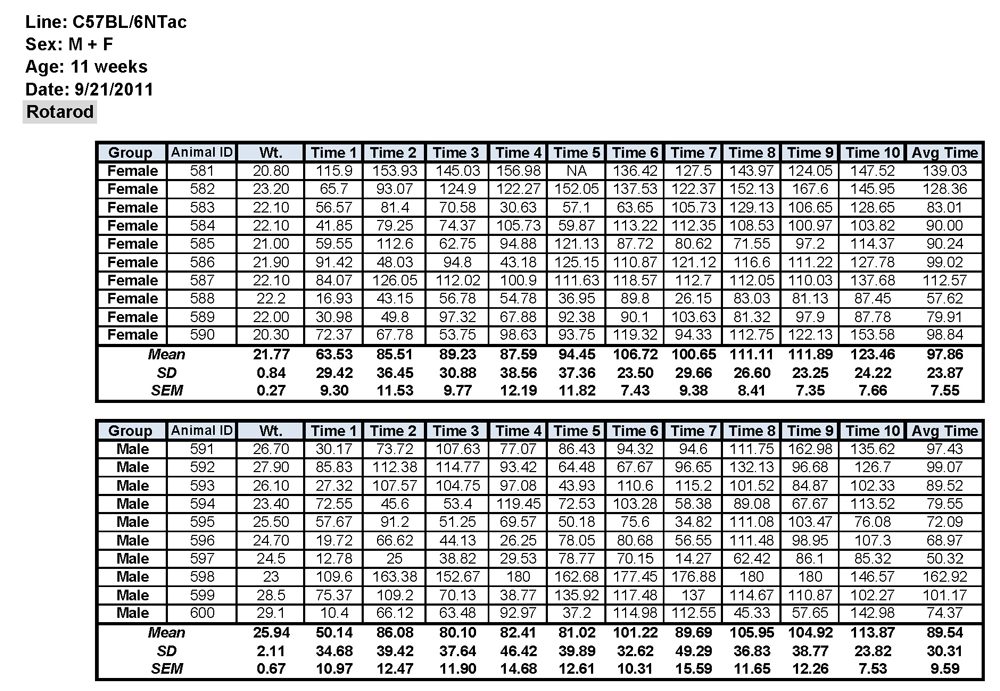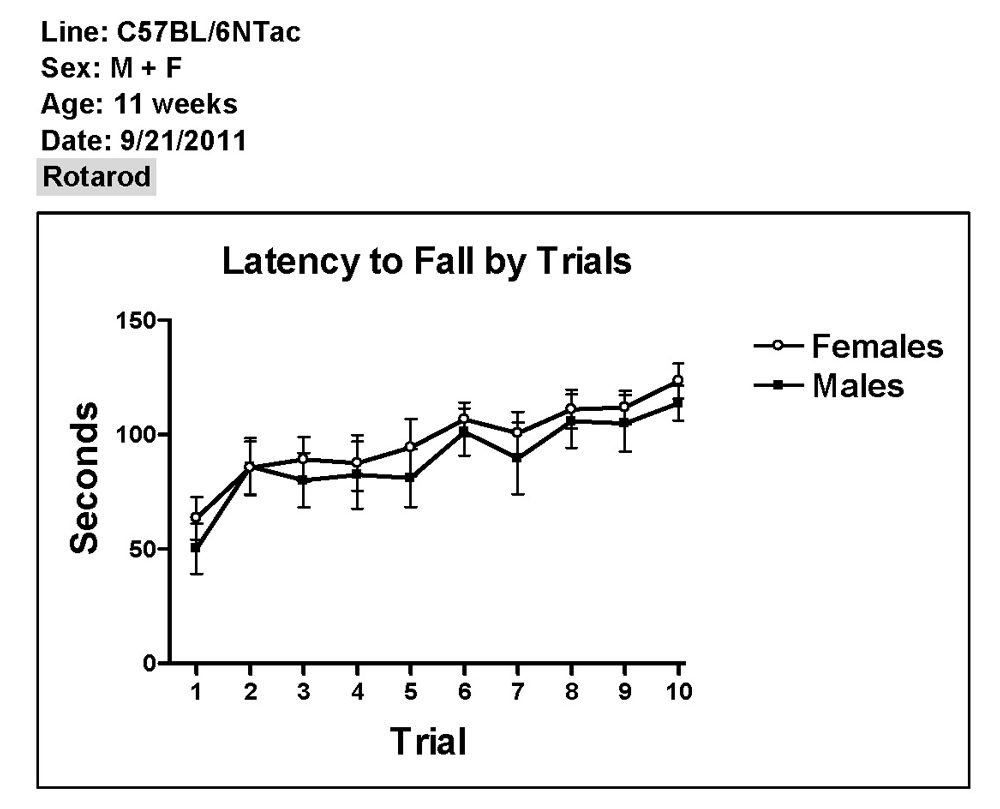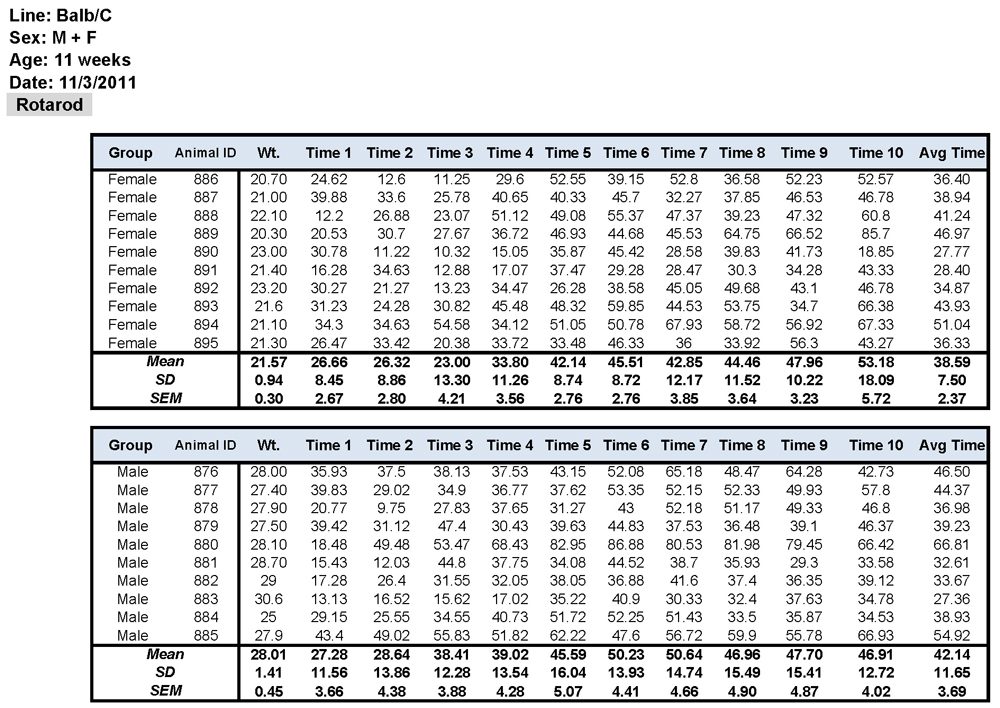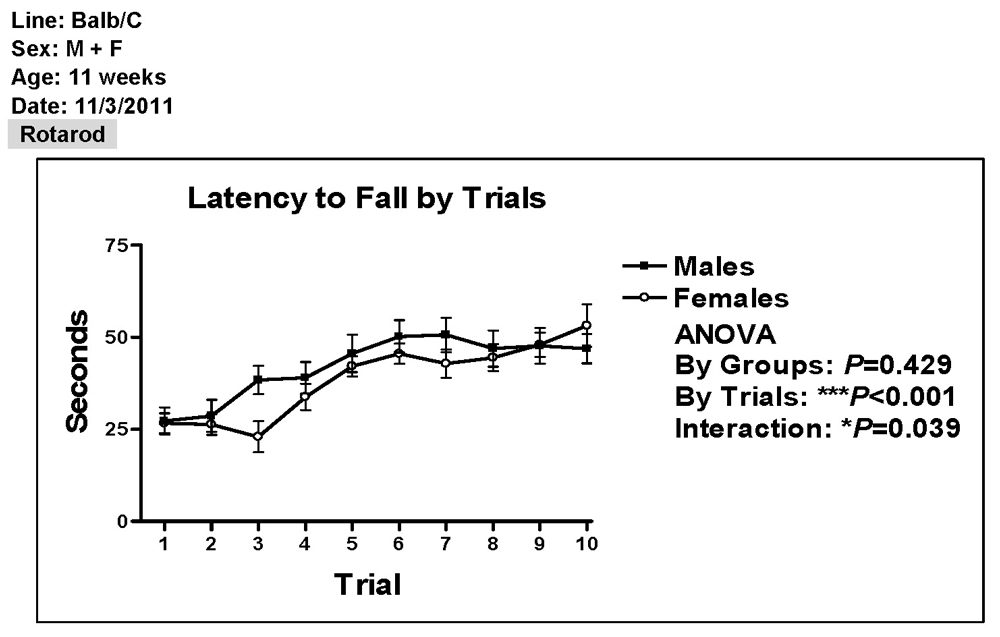- Home
- Resources
- Phenotypic Data
- Rotarod
Rotarod
Rationale:
The rotarod test is a classic method to assess motor coordination, balance, and motor learning in mice. In the Rotarod test, a mouse is placed on a rotating rod. The speed of rotation is gradually increased and the mouse's ability to remain on the rotating rod is recorded. The parameter describing an animal's ability is the time the animal is able to stay on the rotating rod combined with the speed of the rod at which the animal loses balance.
Method
Group housed mice aged 10 weeks were used for this experiment. They were maintained on a light:dark cycle (6 am: 8 pm) with food and water available ad libitum. The mice were acclimated to the testing room for at least 30 minutes. The assay was carried out using four EzRod test chambers kept in a laminar flow hood for testing. For the accelerating rotarod paradigm, the mice were given 10 trials with the maximum duration of 3 min and a 30 sec ITI. Each mouse was placed on the EZRod machine and the latency to fall was recorded for all trials. If the mouse fell or 3 min elapsed, the mouse was left in the bottom of EzRod test chamber for 30 sec before starting the next trial.















.jpg)

.jpg)
.jpg)
.jpg)
.jpg)





.jpg)


.jpg)
.jpg)

.jpg)


.jpg)





.jpg)

.jpg)






